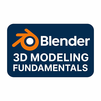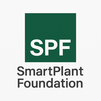
The SP3D (SmartPlant 3D) Software course offers comprehensive training in modern plant design using intelligent 3D modeling tools. It focuses on piping, structural, equipment, electrical, and HVAC modules, enabling learners to design efficiently within a rule-driven, data-centric environment. Participants explore clash detection, specification management, and project collaboration. Designed for engineering professionals, this course enhances productivity and prepares learners to deliver complex industrial projects with precision, safety, and compliance to global standards.
SP3D Software Training Interview Questions Answers - For Intermediate
1. What database does SP3D use and why is it important?
SP3D primarily uses Microsoft SQL Server as its database backbone. This central database stores all design data, specifications, and project information, ensuring that the model remains consistent across disciplines. The database-driven architecture allows multiple users to work simultaneously without overwriting each other’s changes, supports revision control, and ensures data integrity throughout the project lifecycle.
2. How does SP3D integrate with SmartPlant Foundation (SPF)?
SP3D integrates seamlessly with SmartPlant Foundation, which acts as a project data management tool. SPF manages documents, specifications, and revisions, while SP3D provides the design environment. The integration allows project teams to maintain a single source of truth, ensuring that drawings, reports, and 3D models are aligned with controlled documentation and revision history.
3. Explain the concept of intelligent objects in SP3D.
In SP3D, all model components such as pipes, equipment, and structures are treated as intelligent objects. This means they carry metadata in addition to geometry, including specifications, material properties, and connectivity rules. The intelligence allows these objects to interact with each other logically, enforce design rules, and automatically update when project standards change.
4. What is the significance of piping isometrics in SP3D?
Piping isometrics are automatically generated drawings that represent a piping system in a simplified 2D format. In SP3D, these are extracted directly from the 3D model and include dimensions, weld details, and material lists. Since they are linked to the model, any design change is reflected in the isometric drawings, ensuring accuracy for fabrication and installation.
5. How does SP3D support structural design?
SP3D’s Structural module enables designers to model steel, concrete, and composite structures with precision. It provides libraries of standard profiles, automatic connection tools, and rule-based placement. Designers can also integrate civil foundations, stairs, ladders, and platforms. The structural model interacts dynamically with piping and equipment, ensuring that clashes are detected early.
6. What are the benefits of parametric modeling in SP3D?
Parametric modeling in SP3D allows designers to define components using variable-driven parameters rather than fixed geometry. For example, a tank can be defined by height and diameter, and resizing these parameters automatically updates the model. This approach improves flexibility, reduces rework, and ensures that design modifications are quickly implemented without manual redrawing.
7. What is the difference between reference data and project data in SP3D?
Reference data in SP3D refers to standardized catalogs, specifications, and templates that are reusable across multiple projects. Project data, on the other hand, is specific to a particular project and includes actual 3D models, drawings, and reports. Reference data ensures consistency, while project data captures the unique design details of each project.
8. How does SP3D handle equipment nozzle management?
SP3D provides intelligent tools to define and manage equipment nozzles. Nozzles are parametric objects that carry connection rules, orientation, and size information. When routing piping, the software automatically recognizes nozzle properties, ensuring accurate connections. Changes to nozzle orientation or size automatically update the connected piping, maintaining model consistency.
9. What is the importance of grid systems in SP3D?
Grids in SP3D serve as reference frameworks for placing and aligning equipment, structures, and piping. They define the spatial orientation of the plant and help designers maintain accuracy and alignment during modeling. Grids are especially important for large projects, as they allow different disciplines to work within a common reference system, minimizing misalignments.
10. How are HVAC systems modeled in SP3D?
The HVAC module in SP3D enables designers to create ducting, air-handling units, and ventilation systems with specification-driven rules. Similar to piping, ducts can be routed intelligently with automatic fitting placement and clash detection. The system ensures that HVAC designs integrate smoothly with piping, electrical, and structural elements, providing a realistic and constructible plant layout.
11. What role does project administrator play in SP3D?
A project administrator in SP3D is responsible for setting up the project environment, managing reference data, creating work breakdown structures, and controlling user permissions. The administrator ensures that standards, specifications, and catalogs are properly configured, enabling designers to work effectively. They also oversee revision control and resolve data management issues.
12. How does SP3D ensure design accuracy through rule checking?
SP3D incorporates rule checking that validates designs against project-specific standards and industry codes. For example, it can enforce minimum pipe spacing, allowable branch connections, or structural load limits. Rule checking occurs in real-time during design, highlighting violations immediately. This reduces errors, ensures compliance, and enhances overall design quality.
13. What is a report in SP3D and how is it generated?
Reports in SP3D are tabular outputs generated from the model database. Examples include material take-off, equipment lists, and cable schedules. Since each model component carries metadata, the software can automatically compile accurate reports. These reports are customizable and can be exported into different formats, making them valuable for procurement and project management.
14. How does SP3D support multi-discipline coordination?
SP3D supports multi-discipline coordination by allowing different engineering teams—piping, structural, HVAC, and electrical—to work in the same integrated environment. The database-driven model ensures that updates made by one discipline are visible to others. Built-in interference checking and rule enforcement further ensure that designs are coordinated, reducing conflicts and rework during construction.
15. What are some limitations of SP3D?
While SP3D is a powerful tool, it has certain limitations. It requires significant hardware resources, making performance an issue with very large models. The software also demands extensive setup of catalogs and specifications before project execution, which can be time-consuming. Additionally, customization may require programming knowledge, and integration with non-Intergraph tools can be challenging without specialized expertise.
SP3D Software Training Interview Questions Answers - For Advanced
1. How does SP3D manage large-scale project data across multiple sites and contractors?
SP3D manages large-scale project data through its database-centric design, where a central SQL Server database acts as the single source of truth. In multi-site projects, distributed workshare models can be implemented, allowing contractors in different geographic locations to access and update the same project database in real time. Role-based permissions and partitioning of the model ensure that teams only access data relevant to their scope of work, minimizing risks of accidental overwrites. The software also supports replication and synchronization features that keep data consistent across sites. This approach enables EPC companies to coordinate design efforts seamlessly across continents, reducing delays caused by communication gaps and misaligned data.
2. How does SP3D handle integration with stress analysis software like CAESAR II?
SP3D integrates with stress analysis software such as CAESAR II by exporting piping models with all associated metadata including line numbers, sizes, and specifications. The connectivity data is preserved, allowing analysts to import the piping model directly into CAESAR II without redrawing. Once stress analysis is performed, results like pipe wall thickness adjustments, support additions, or flexibility requirements can be fed back into SP3D, ensuring the 3D model reflects the final validated design. This bidirectional workflow ensures both accuracy and compliance with design codes, reducing manual work and avoiding inconsistencies between stress analysis and the plant model.
3. Explain how SP3D supports digital twin development.
SP3D plays a crucial role in digital twin creation because its intelligent 3D models carry both geometric and non-geometric data. Every object, such as equipment or piping, has metadata describing material, specification, operational conditions, and connectivity. When combined with real-time operational data from IoT sensors, the SP3D model forms the backbone of a digital twin that represents the physical plant. This enables predictive maintenance, performance monitoring, and operational simulations. Advanced integrations with asset management systems and cloud platforms ensure that the digital twin remains synchronized with both design intent and real-world performance, creating a powerful tool for lifecycle management.
4. What advanced methods are available for customizing reports in SP3D?
SP3D allows advanced report customization by directly querying its SQL database or using built-in reporting tools like Report Manager. Users can create custom queries to extract discipline-specific data such as material take-offs, equipment lists, or cable schedules. Advanced reporting often involves embedding calculations, conditional formatting, and linking with external reporting tools such as Microsoft Excel, Power BI, or Crystal Reports. Some organizations even integrate SP3D with ERP systems like SAP for procurement and cost control. This high level of flexibility ensures that reports meet both internal requirements and client-specific formats, reducing manual processing time and improving project tracking.
5. How does SP3D deal with revision tracking for regulatory compliance?
SP3D maintains revision tracking by associating each change with a timestamp, user ID, and description. The database-driven nature ensures that all revisions are stored in a secure audit trail. When regulatory audits occur, stakeholders can review the history of any component, including who made the change, why it was made, and its impact on the model. Integration with SmartPlant Foundation enhances this by linking revisions with controlled documents such as P&IDs, datasheets, and specifications. This traceability ensures compliance with standards like ISO 9001 and industry regulations, while also safeguarding project accountability and legal defensibility.
6. How does SP3D support modular construction strategies?
SP3D supports modular construction by allowing designers to break the plant model into constructible modules that can be fabricated offsite and later assembled onsite. These modules are designed within SP3D using boundaries and referenced coordinate systems. The software generates detailed module drawings, including lifting points, weights, and material lists, ensuring constructability. Clash detection within module boundaries ensures that prefabricated units can be assembled without interference. This strategy reduces onsite construction time, improves safety, and lowers costs by enabling parallel fabrication and site preparation.
7. What is the role of project schema customization in SP3D?
Project schema customization defines how data is structured, managed, and reported within SP3D. A schema determines relationships between objects, naming conventions, property sets, and workflows. Customizing the schema allows organizations to align SP3D with their internal processes, client deliverables, and industry requirements. For example, specific property fields can be added for regulatory data, or naming conventions can be enforced to match contract documents. This advanced customization ensures that project data is consistent, accurate, and compatible with downstream systems such as procurement or construction planning tools.
8. How does SP3D improve safety and operability in plant design?
SP3D enhances safety and operability by incorporating design rules and simulation capabilities. Clearances for maintenance access, safety zones for hazardous areas, and escape route layouts can be modeled and validated. The intelligent clash detection system ensures that equipment placement does not obstruct critical pathways or create unsafe conditions. Furthermore, integration with safety and hazard analysis tools enables designers to simulate scenarios such as fire spread or equipment failure. This proactive approach ensures that plants designed in SP3D meet safety regulations while remaining operable and maintainable throughout their lifecycle.
9. How does SP3D optimize interdisciplinary collaboration in mega projects?
In mega projects, SP3D optimizes interdisciplinary collaboration through its shared database environment, where multiple teams work on the same model concurrently. Each discipline—piping, electrical, structural, and HVAC—has its own workspace, but changes are visible in real-time to others. The use of rule-based design and clash detection ensures that design elements from different disciplines do not conflict. Administrators can enforce workflows and permissions, ensuring accountability while maintaining collaboration. This real-time interaction across disciplines eliminates silos, reduces rework, and enhances project efficiency, which is critical in billion-dollar EPC projects.
10. What strategies exist for handling legacy data migration into SP3D?
Legacy data migration into SP3D involves importing models and drawings from older systems like PDS, PDMS, or AutoCAD. This is achieved using data exchange formats such as CIS/2, IFC, or proprietary migration tools. The migration process includes mapping legacy specifications and catalogs to SP3D’s reference data, validating geometry, and ensuring metadata integrity. In many cases, partial automation is used, with manual adjustments made afterward to fix inconsistencies. Advanced strategies also involve cleaning and rationalizing legacy data to ensure compliance with current standards. This approach ensures continuity of historical project data while leveraging SP3D’s advanced capabilities.
11. How does SP3D manage construction sequence simulation?
SP3D supports construction sequencing by allowing designers to associate model objects with construction activities and timelines. This enables simulation of erection sequences, module assembly, and installation schedules. Clash detection during simulated sequences ensures that temporary construction equipment like cranes or scaffolding does not interfere with permanent structures. Integration with project management tools such as Primavera or MS Project allows schedules to be directly linked with the 3D model. This 4D simulation capability enhances constructability reviews, reduces delays, and supports lean construction methodologies.
12. What role does SP3D play in lifecycle asset management?
SP3D models extend beyond design into asset management throughout the plant lifecycle. Since every model object carries metadata, it can be linked with operations and maintenance systems. This enables asset tracking, predictive maintenance, and real-time performance monitoring. For example, pump models in SP3D can be linked with operational data on vibration and efficiency, providing insights into maintenance needs. Integration with Enterprise Asset Management (EAM) systems like IBM Maximo ensures that design intent and operational reality remain synchronized. This makes SP3D an enabler of digital transformation strategies, ensuring long-term value from the design data.
13. How does SP3D support offshore and marine projects?
SP3D supports offshore and marine projects by providing tools tailored for complex environments such as FPSOs, rigs, and shipyards. Its structural module allows modeling of curved hulls, decks, and bulkheads, while piping and HVAC modules address the compact routing challenges typical of marine systems. The software also supports specialized equipment libraries and integrates with marine classification standards. Advanced clash detection and weight management features ensure stability and safety, which are critical in offshore environments. These capabilities make SP3D suitable not only for traditional plants but also for high-stakes marine engineering projects.
14. What are the key challenges in training teams for SP3D adoption, and how are they overcome?
Training teams for SP3D adoption presents challenges due to the software’s complexity, steep learning curve, and the need for discipline-specific knowledge. Many users transitioning from older tools struggle with SP3D’s rule-driven design and database-centric workflows. These challenges are overcome by structured training programs that combine theoretical understanding with hands-on practice in real project environments. Role-specific training—such as piping, structural, or electrical—ensures focus on relevant features. Additionally, mentoring, on-the-job support, and access to vendor-certified training courses help users adapt quickly. Standardizing workflows and providing pre-configured templates also reduce the initial learning burden.
15. How does SP3D contribute to reducing project costs and timelines?
SP3D reduces project costs and timelines through automation, accuracy, and collaboration. Automated rule-driven design minimizes manual errors, while clash detection reduces costly rework during construction. Intelligent reporting ensures real-time material take-offs, improving procurement efficiency and reducing wastage. The integration of multiple disciplines within a single environment eliminates duplication of effort and enhances coordination, speeding up project execution. Construction simulation capabilities further allow teams to plan sequences effectively, avoiding delays. Collectively, these features enable EPC companies to deliver projects faster, with lower costs, and with greater quality assurance, making SP3D a critical enabler of competitive advantage in the engineering sector.
Course Schedule
| Dec, 2025 | Weekdays | Mon-Fri | Enquire Now |
| Weekend | Sat-Sun | Enquire Now | |
| Jan, 2026 | Weekdays | Mon-Fri | Enquire Now |
| Weekend | Sat-Sun | Enquire Now |
Related Courses
Related Articles
- Key AWS Tools and Technologies for DevOps
- Mastering BIM Skills with Revit MEP Online Training
- Unlock Your Potential with Kronos Certification Training: Elevate Your Workforce Management Skills
- How Microsoft Azure Data Engineer [DP-203] Prepares You for Big Data, Streaming & Analytics
- Designing the Future of Marine Engineering with Maxsurf
Related Interview
- PL-300 Microsoft Power BI Data Analyst Interview Questions Answers
- Siemens SPPA 3000 Basic Training Interview Questions Answers
- Certified Threat Intelligence Analyst (CTIA) Training Interview Questions Answers
- HR110 - Business Processes in SAP HCM payroll Training Interview Questions Answers
- DataBricks Lakehouse Training Interview Questions Answers
Related FAQ's
- Instructor-led Live Online Interactive Training
- Project Based Customized Learning
- Fast Track Training Program
- Self-paced learning
- In one-on-one training, you have the flexibility to choose the days, timings, and duration according to your preferences.
- We create a personalized training calendar based on your chosen schedule.
- Complete Live Online Interactive Training of the Course
- After Training Recorded Videos
- Session-wise Learning Material and notes for lifetime
- Practical & Assignments exercises
- Global Course Completion Certificate
- 24x7 after Training Support















 Join our Live Instructor-Led online classes delivered by industry experts
Join our Live Instructor-Led online classes delivered by industry experts